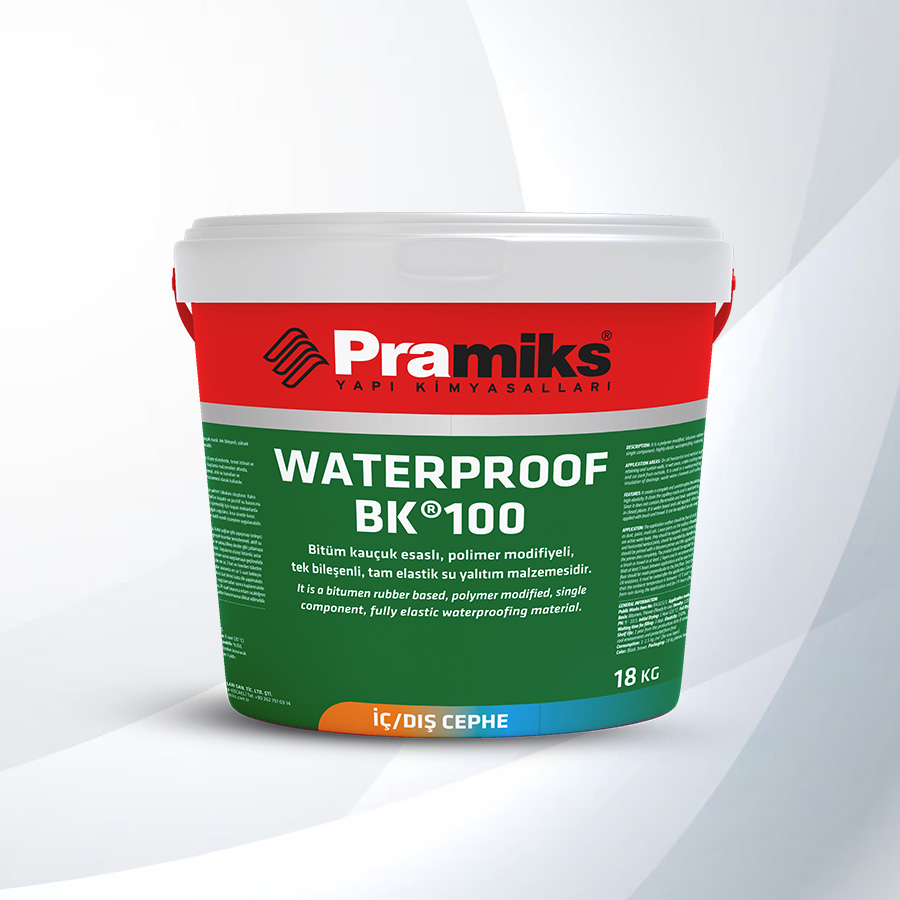Belgelerimiz

PRODUCTS
PRATECH® BK100
Bitumen Rubber-Based Single-Component Fully Elastic Waterproofing Material
Polymer-modified, bitumen rubber emulsion-based, single-component waterproofing material with high elasticity.
- Creates a complete and continuous waterproofing layer.
- Provides permanent high elasticity.
- Seals micro-cracks and has high resistance to positive water pressure.
- Water-based and applied cold. Resistant to moisture and water.
c
Details
Technical Specifications
|
|
|
|---|---|
| Color | Black |
| Thinner | Water |
| Solid Content by Weight | % 30 |
| Viscosity | 800 mPa.s |
| Waiting Time Between Coats | 4-5 hours / 20°C |
| Application Methods | Brush, Roller, Air Spray Gun |
| Time Before Use | Mechanical strength: 3 days / Water impermeability: 7 days |
| Consumption | Depending on the structure, roughness, and porosity of the applied surface, for each coat: 500-750 g/m² |
| Packaging | 18 Kg. |